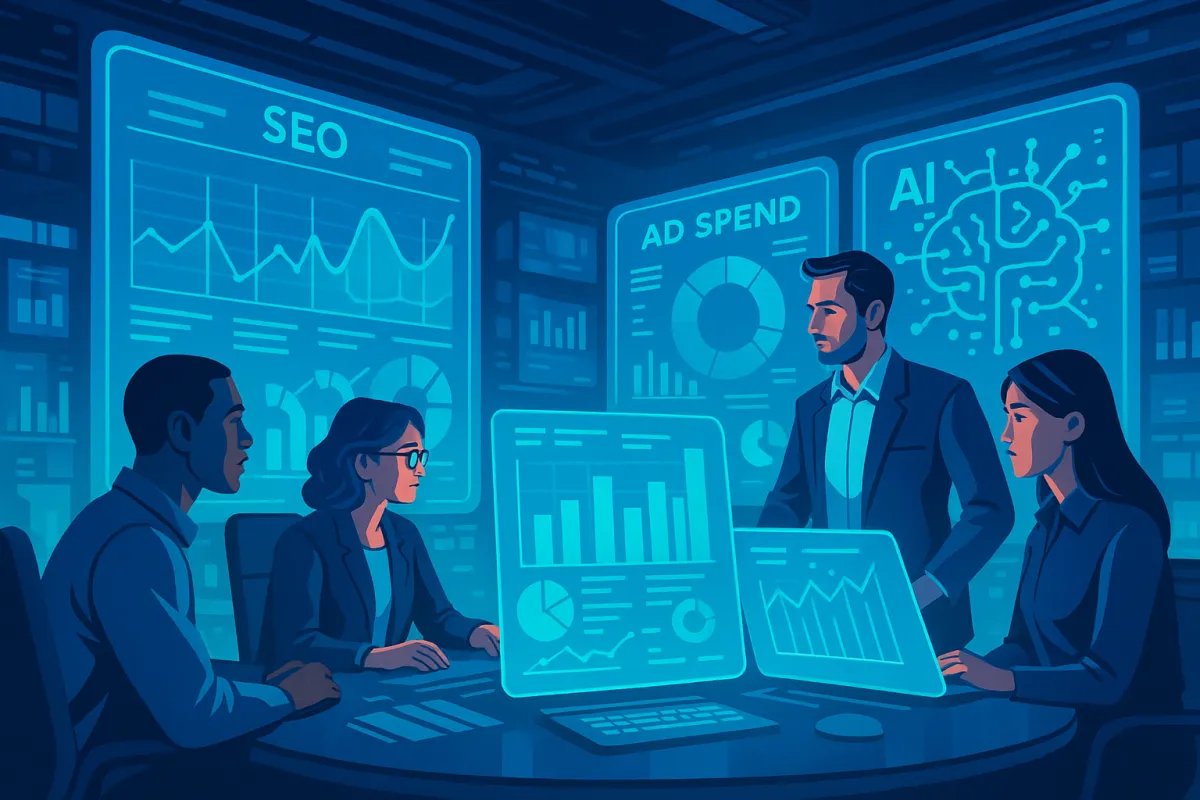
How AI Is Forcing Marketers to Rethink SEO, Ad Buying, and Data Strategy
Search and advertising are experiencing the most profound disruption since the launch of Google Ads two decades ago. Generative AI, cookie deprecation, and tightening privacy laws are converging to force marketing leaders to revisit the fundamentals of how they acquire traffic, allocate budgets, and manage customer data for sustainable growth. This article unpacks the forces behind this shift and provides an actionable roadmap for forward-thinking teams.
The New SEO Mandate: From Rankings to Answers
1. Zero-Click Search Is the New Normal
AI summaries and conversational results reduce traditional click-throughs.
Visibility now depends on Generative Engine Optimization (GEO) and rich, structured data.
2. Optimizing for Generative Engines
Publish structured, machine-readable content (schema.org, JSON-LD,
llms.txt).Embed concise, answer-ready passages that LLMs can quote verbatim.
Maintain freshness signals—LLMs favor recently updated sources.
3. Intent > Keywords
Semantic search rewards topical authority and user intent alignment over exact-match phrases. Build pillar-cluster architectures and leverage AI tools for entity extraction to cover questions end-to-end.
Ad Buying in a Privacy-First World
1. Contextual & AI-Assisted Targeting
With third-party cookies in retreat, AI models analyze on-page semantics, sentiment, and visual cues to place ads contextually.
Dynamic creative optimization (DCO) now relies on real-time signals instead of historical user IDs.
2. Budget Allocation Shifts
Test privacy-centric networks (e.g., retail media, clean-room partnerships).
Redistribute spend toward mid-funnel engagement where first-party data can be captured quickly.
Use predictive lifetime value (pLTV) models to decide bid ceilings.
Intelligent Data Utilization
1. First-Party Data as Core Asset
Collect zero- and first-party data via value-exchange experiences—interactive tools, loyalty programs, and gated content.
2. Clean Rooms & Secure Collaboration
Data clean rooms allow brands to match audiences with partners without exposing raw data, enabling compliant reach extension.
3. AI-Driven Analytics
Modern CDPs with embedded ML surface micro-segments and real-time propensity scores, driving smarter campaign triggers.
Practical Steps for Marketing Leaders
Audit current SEO and ad workflows for AI readiness.
Upskill teams on prompt engineering and data governance.
Pilot GEO-focused content sprints and contextual ad tests.
Invest in a privacy-safe, first-party data architecture.
Measure success with blended metrics—organic answer inclusion rates, pLTV, and incremental revenue lift.
Key Takeaways
AI is collapsing the funnel; brands must surface in answer engines, not just SERPs.
Contextual, privacy-centric ad buying is replacing identity-heavy targeting.
First-party data and clean rooms unlock compliant audience expansion.
Embedding AI into every stage—from research to reporting—drives competitive advantage.
Ready to Accelerate Your Growth?
Unlock next-level performance with an AI-powered, privacy-first strategy. Contact us today!
